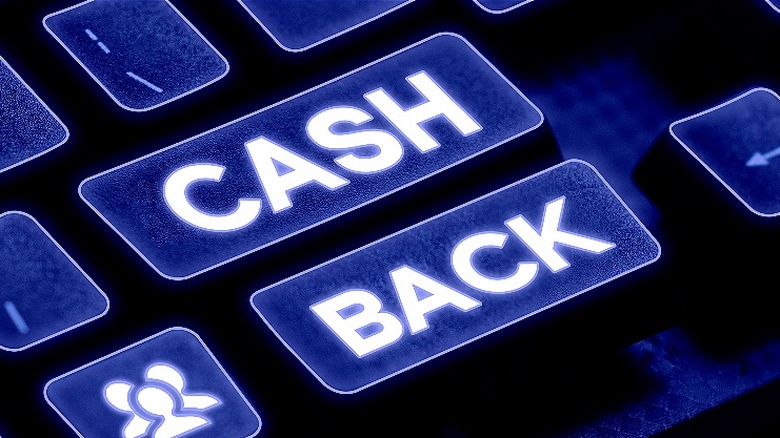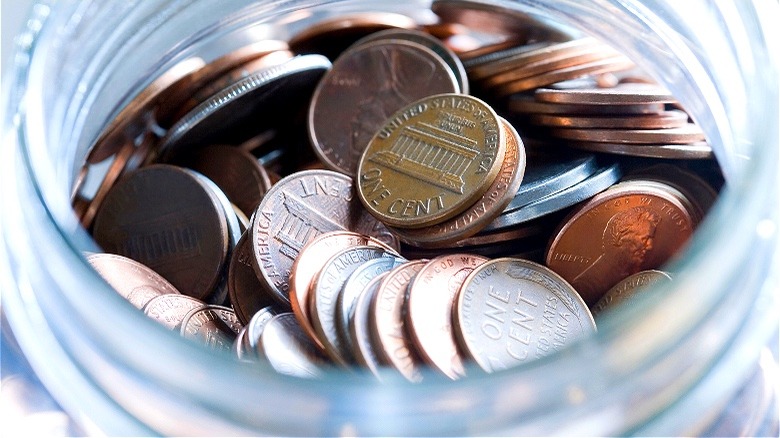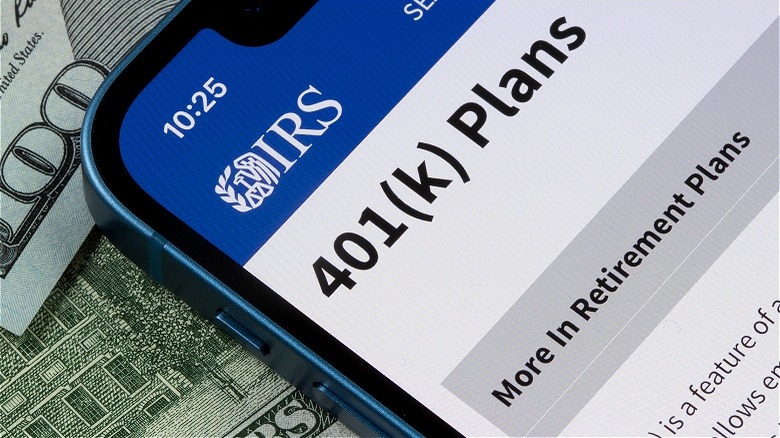5 Brilliant And 5 Not-So-Brilliant Ways To Trick Yourself Into Saving Money
There's a right way and a wrong way to do anything — and saving money is no different. Forbes Advisor found that among the generations, 32% of Generation Z, 31% of millennials, 27% of Gen X, and 20% of baby boomers have less than $1,000 saved. Further, those that had savings, most used standard savings accounts instead of accounts yielding higher returns.
Every generation has their reasons for saving, per the survey. While Gen X and millennials pursue building their emergency funds, baby boomers are focused on retirement, and Gen Z on buying cars. Further, a percentage of savers from each generation cohort admitted to dipping into their savings on a monthly basis, with millennials having the highest percentage at 26%. Meanwhile, 49% of those surveyed said they expected to save the same amount or less in 2024 as they did in 2023.
Research published in American Psychologist suggests your personality traits indicate what saving strategies will work best for you. When 6,056 participants with less than $100 in savings were given the goal of saving $100 per month with strategies based on their personalities, they had more success than groups that weren't. In other words, saving is psychological in nature, and there are potentially ways to trick yourself into saving more than you do. Of course, there are also various not-so-smart ways to do the opposite.
Not so brilliant: Paying for catastrophic insurance only
People buy into catastrophic insurance plans believing they'll save money on health coverage. Also known as minimum coverage plans, these plans provide basic medical coverage for Americans under 30 years old, as well as citizens without employer-based plans experiencing economic hardship that limits marketplace options. You also receive preemptive care planning, check-ups, screenings, and at minimum, three primary care visits a year if you've paid your deductibles. The benefit of this type of insurance is a lower premium. The catch is you'll pay more upfront in deductibles for this coverage.
Plans purchased on the market fall into four categories: bronze, silver, gold, and platinum, with catastrophic health ranking in a special fifth tier. According to HealthCare.Gov, a costly illness or injury could cost you up to $9,450 in deductibles before insurance kicks in, not including premiums, services beyond what your insurer is willing to cover for that service, or anything outside your provider's network.
To compare, according to Forbes Advisor, the average monthly cost of silver-tier insurance for a 30-year-old is $488 per month, or $5,856 per year. For that, you get 80% of your deductible covered if needed, with the additional benefit of tax credits you can get back for premiums.
Brilliant: Basing purchasing decisions on hours worked
According to the Harvard Business Review, the psychology of consumption has people act in ways that are contrary to what they perceive. For instance, HBR gives an example of two people who buy a gym membership: one pays $600 for the entire year at the time of sign-up and the other pays $50 per month. Between these two consumers, the person paying $50 per month is more likely to hit the gym than the person paying the bigger up-front lump sum. That's because, psychologically, the $50 monthly payments keep the true cost of the membership front of mind. The person who paid up front loses motivation as they get further away from the initial $600 payment since it's not regularly on their mind.
One brilliant way of leveraging this psychology of consumption is to consider your unnecessary purchases in terms of the hours you work instead of what you can currently afford. Per Statista, the average workweek in the U.S. is 34.2 hours a week, while ZipRecruiter places the average hourly wage at $28.16. If you're undecided between a brand-new $2,000 laptop and a notebook for $150, dividing the cost of the item by your hourly wage reveals a cost of 71 hours of work versus five hours. That's sure to have an impact on your spending.
Not so brilliant: Taking on a huge home renovation alone
If you're handy, then a simple DIY guided by a YouTube professional and a few materials sourced from the local hardware shop can save you a bundle. However, for larger, more complicated projects, you'll likely be better off hiring a pro.
In a survey conducted by the Home Improvement Research Institute, 20% of survey respondents spent between $1,000 to $4,999 on home renovations in December 2023, although bigger jobs like roof replacements and bathroom additions averaged upward of $15,000. Further, according to the 2024 U.S. Houzz & Home Report, 39% of home improvement projects came in over budget, with 83% paid for with personal savings and 37% by credit card.
It should be obvious that pulling from your savings accounts is sure to have negative impacts on your saving goals. So can a credit card with a higher interest rate than a home improvement loan or zero-interest credit card. Aside from the cost of an unnecessary renovation is the potential to mess up the reno. Once that happens, you'll be stuck having to hire a contractor to undo your mistakes, which is basically paying to do one job two times. Unless the renovation is part of your savings goal, it's best to hire a professional to do it right the first time, and avoid home improvement projects you'll lose money on altogether.
Brilliant: Applying for a cash-back rewards card
While credit cards in some circles are considered savings killers, they don't have to be, so long as you make your payments on time and avoid maxing them out. Aside from the benefit of raising your credit score, which gives you access to more credit at a lower cost of borrowing, a cash-back credit card can earn rewards that saves you money in other areas of your life by covering some of your purchases. Cash-back cards recoup a certain percentage of your spending in cash.
For instance, consider a credit card that offers redeemable rewards of 2% on all purchases, which translates to $2 for every $100 spent. Add to this, an offer to get back 5% on travel-related purchases made through the card issuer's partner network, and a sign-up bonus of $200 if you make $1,500 in purchases within the first six months. All of these are ways to get cash back simply for using your new card.
Typically, with cash-back cards, you can get that money back as credit on your statement, in gift cards, a check in the mail, or through direct deposit to your checking account or directly into your savings account, the latter of which would work nicely with your savings goals. With this said, keep in mind that all that glitters isn't gold, and you need to understand what the pros and cons of cash-back credit cards are before you apply.
Not so brilliant: Skipping regular vehicle maintenance
If you own a car, the idea of saving a buck by skipping a regular checkup on that vehicle may be enticing. Just like your personal medical checkups, though, car maintenance can preempt a serious and much more expensive problem down the road. An engine that's suffering serious damage will run you thousands of dollars on its own, while failing to maintain spark plugs and air filters can negatively impact your fuel efficiency and cost you more at the pump.
Per Consumer Reports' 2023 annual auto surveys, the cost to maintain a vehicle over five years of driving is anywhere between $580 for standard vehicles to $4,250 for luxury vehicles. Alternatively, an overheated engine can cost you up to $6,000 to repair, while a damaged transmission can reverse your savings goals by as much as $7,100.
Luckily, most newer car models come with maintenance reminders that flash on your dashboard to let you know it's time for a checkup. If you're driving an older car that doesn't have such reminders, changing your oil once a year is a good standard to keep. Modern upgrades to lubricants mean you should plan an oil change every 5,000 to 7,500 miles.
Brilliant: Deleting your unused subscriptions
According to a Self Financial survey on paid subscriptions, the average American burns $32.84 per month on 4.1 unused paid subscriptions, with 85.7% of survey respondents admitting to paying for at least one unused subscription per month. Ironically, 39.3% of people who don't cancel their unused subscriptions point to automatic renewals making it either too complex or time-consuming to bother (a few good reasons not to use autopay for subscriptions). At $32.84, that average adds up to $394 per year wasted on services you don't even need.
Many experts like Fidelity Investments suggest that $1,000 is a good initial saving goal to build an emergency nest egg, followed by an attempt to save three to six months' worth of income. Looking at the average cost of unused subscriptions per year, saving $394 can get you more than a third of the way to your first $1,000 just by canceling your unused subscription services. What's more, putting that money into a high-yield savings account or CD can get you even more in interest.
Not so brilliant: Skipping automobile insurance
Insurance companies are hedging their bets against the rising cost of vehicles and their repair by raising the cost to insure them. Factors including rising inflation, slow recovery of the supply chain (from COVID-19), delivery of parts like microchips, and labor disputes, as well as the unpredictable nature of damage caused by climate change, have affected vehicle costs and insurance. Since your vehicle and the cost of insuring it is more expensive, it's understandable that someone might try to scrimp on one to make up for the other.
There are potential legal ramifications for not having car insurance including the loss or suspension of your driver's license, escalating fines, or the impoundment of your vehicle. Buying a car you can't drive, paying bail or fines, or coughing up cash to get your car out of impoundment are all expenses you can avoid by being insured. Have an accident and you could be stuck paying to repair your and the other driver's vehicle if you're at fault. Shop around for the best rate.
Brilliant: Saving coins for a future purchase
The Wall Street Journal recently reported that Americans are casually tossing away as much as $68 million a year in coins. Of the coins not thrown out, about half are sitting unused in people's homes. With cash making way for credit, debit, digital wallets, and cryptocurrencies, it seems like most of us aren't taking advantage of an asset sitting unloved between our sofa cushions. Apparently, even the Transportation Security Administration is recovering hundreds of thousands of dollars worth of coins from airports every year. In 2020 for example, the TSA recovered $517,978 worth of coins.
Be like the TSA and pull your coins out of the trash. Keep all your spare change in a jar or an old school piggy bank and get into the habit of exchanging your saved coins for cash, like at a Coinstar kiosk. Note that these machines keep a percentage of your payout so if you want to keep all of your saved-up change, ask your bank branch for coin wrappers, sort them, and deposit them into your savings every month.
Not so brilliant: Not maxing out your 401(k)
An AARP survey found that 20% of adults 50 years old and over lack any retirement savings, with 61% expressing concern they won't have enough money to make it through their retirement. If you're fortunate enough to have an employer that provides you with a 401(k) plan, you had better take full advantage of it. The AARP survey found another interesting statistic — Americans with a workplace plan are 15 times more likely to save for retirement. However, if your goal is to save for retirement, note that there's a common mistake many Americans make with their 401(k)s that keeps them from maximizing their retirement savings.
Not maxing out your 401(k) is like leaving money on the table for the future. Instead of looking at investing more of your paycheck as a loss, you can trick your brain into saving more for retirement by looking at this as paying your future self. This closely aligns with "Rich Dad, Poor Dad" author Robert Kiyosaki's principle of always paying yourself first.
What's more, a 401(k) automatically does the investment and future savings part for you, without even having to think about it. The maximum contribution limit in 2024 is $23,000 if you're under 50 years old and $30,500 if you're 50 plus. With compounding interest, the sooner you start, the more interest and retirement savings you'll accrue faster.
Brilliant: Using bonuses and raises to beef up your 401(k)
If you're already maxing out your 401(k), that's great. However, you can double down on that if you have a windfall of money at work this year. Per payroll service provider Gusto, bonuses differ based on industry, but the average bonus range in December 2023 was $381 for salon workers to $13,255 for people in finance. Whether your money comes from a raise or a bonus, it's a great idea to add that extra money to your 401(k) to maximize your retirement savings and just act like you never got it.
Also, look at other investment vehicles like IRAs. A Roth IRA, for example, works well for people who expect to end up in a higher tax bracket when they start pulling from their account, possibly due to future raises or bonuses. While not tax-deductible, they are free from taxation if you're 59 ½ years old when you withdraw from it. Contribute up to $7,000 if you're under 50 or $8,000 if you're over 50 in 2024. A traditional IRA is best for people who expect to be in a similar tax bracket when they retire. A traditional IRA contribution is tax-deductible, so that's another financial benefit. The 2024 contribution limit is the same as Roth IRAs.










